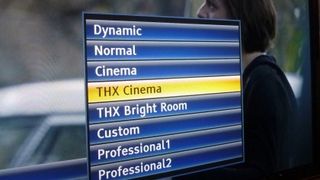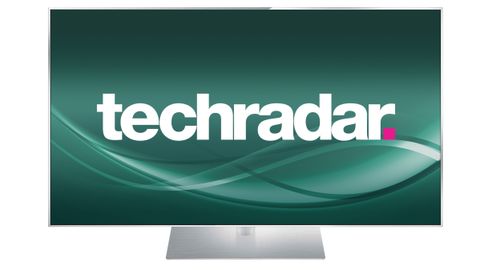Why you can trust TechRadar
Although the TX-P50GT60 is endlessly tweakable, it's also got some excellent preset picture modes that avoid all that (though they themselves are open to tweaks). Our favourite in a dark room was THX Cinema with some extra contrast added, though the standard Cinema setting works better in a brighter room. So too THX Bright Room, though that mode does introduce a lot of flicker.

Where the TX-P50GT60's NeoPlasma Black 3000 panel truly shines is with high definition, and our test disc Prometheus. This movie is a test for any screen, but the TX-P50GT60 ekes out masses of detail from the dingy depths, though displays it in a refined-looking, crisp image with loads of depth.
That Infinite Black Pro filter works a treat here, helping to make images convincing not just when total black is apparent, but with rich colours, too; switch to Life of Pi and the tiger looks simply awesome. Motion and judder are not an issue if you engage the 24p Smooth Film feature on its mid-strength, as shown on the tricky beginning sequence of Hugo; the TX-P50GT60's rendition was absolutely pitch perfect.
Upscaling stength
For all the furore over the TX-P50GT60's cracking hi-def images, we're really pleased with how broadcast TV looks – even standard definition channels. It's perhaps this strength at upscaling that makes plasma still the best all-round choice for living rooms at the hefty 50-inch size.
Yes, edges and close-ups can be soft, but there's hardly a suggestion of noise or artefacting, and both colours and contrast remain strong. Not surprisingly, HD channels looks far crisper, but SD is so good we're not searching for HD versions of programmes, as we so often do with LED TVs.
Turning to 3D, the TX-P50GT60 puts in a decent enough performance, but it doesn't blow our socks off. The chief reason for this is flicker.
During that tricky Hugo sequence we were conscious of a constant slight flicker that interrupted the impressive detail on show, while there was also a touch of resolution loss during camera pans. It's not quite as easy to watch as a passive 3D rendition, though it's ultimately worth getting used to since the 3D effect is both more convincing and subtler despite being more detailed.
Meanwhile the active shutter 3D specs supplied with the TX-P50GT60 – model number TY-ER3D5MA – are lightweight and very comfortable.
Jamie is a freelance tech, travel and space journalist based in the UK. He’s been writing regularly for Techradar since it was launched in 2008 and also writes regularly for Forbes, The Telegraph, the South China Morning Post, Sky & Telescope and the Sky At Night magazine as well as other Future titles T3, Digital Camera World, All About Space and Space.com. He also edits two of his own websites, TravGear.com and WhenIsTheNextEclipse.com that reflect his obsession with travel gear and solar eclipse travel. He is the author of A Stargazing Program For Beginners (Springer, 2015),


